From August 2023 the comments on statistics, a short description of selected, recently issued statistical data in the area of monetary statistics and the non-residents sector statistics, are no longer published. They are replaced by Statistical releases.
Comments on monetary developments for July 2022
Total liquid assets (M4) and money (M1) continued to grow strongly in July. The growth in M4 continued to accelerate in annual terms, while the growth in M1 decelerated due to the base effect, i.e. the large increase recorded in July 2021.
Total placements of monetary institutions to domestic sectors (except the central government) increased sharply, primarily in the segment of non-financial corporations. Household placements continued to increase driven by housing loans, while the growth in general-purpose cash loans was still subdued.
In July, total liquid assets (M4[1]) recorded the biggest ever monthly absolute increase (HRK 13.4bn, based on transactions), primarily reflecting the increase in net foreign assets (NFA) of credit institutions and, to a lesser extent, of net domestic assets (NDA) of the monetary system (Table 1). The increase in NDA was accounted for by the strong growth in placements to domestic sectors, in particular non-financial corporations. Net claims on the central government also increased, which is associated with the bank purchases of the bond of the RC issued in July. Money (M1[2]) also went up significantly in July (HRK 7.2bn or 3.6%, based on transactions), mostly reflecting the growth in demand deposits of non-financial corporations and a slightly weaker growth in demand deposits of households. Quasi-money went up by HRK 6.3bn or 2.8% (based on transactions). As regards its structure, the most pronounced was the intensity of growth in foreign currency deposits of all domestic sectors (Table 3). If analysed on an annual basis, total deposits increased by 12.4% (based on transactions). Deposits of both corporations (22.7%) and households (8.9%) grew strongly under the effect of a very good start of the tourist season, increased liquidity needs of energy sector corporations, which may be linked to the sharp increase in the prices of energy products and finally a significant recapitalisation of a corporation in June of the current year. As regards the annual rates of change in monetary aggregates, the growth in M4 continued to accelerated (from 9.9% in June to 10.5% in July), while the growth in M1 slowed down from 13.0% to 11.7% (Figure 1), due to the larger monthly increase in July of the previous year (the base effect).
| Figure 1 Monetary aggregates annual rates of change based on transactions |
Figure 2 Placements annual rates of change based on transactions |
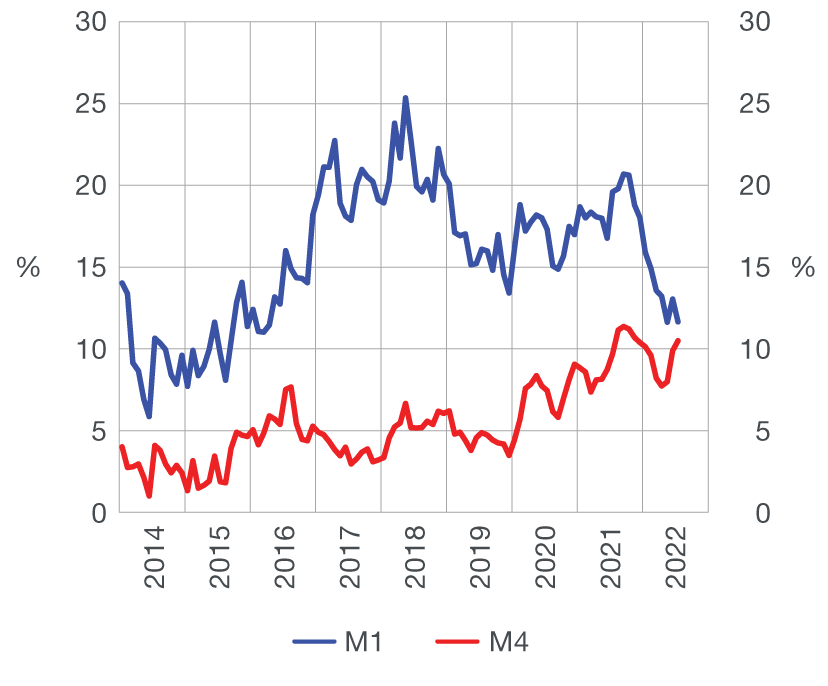 |
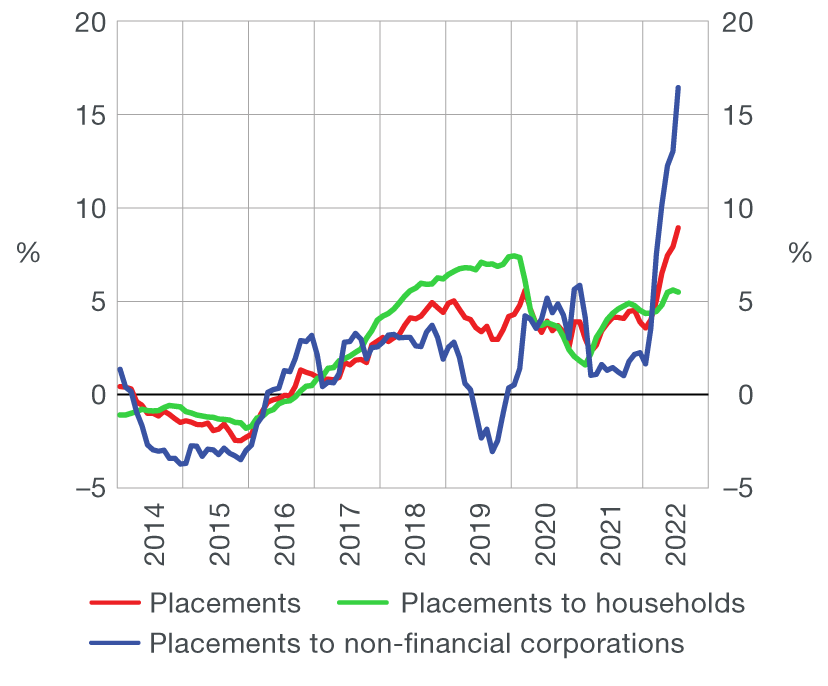 |
| Source: CNB. |
Total placements of monetary institutions to domestic sectors (except the central government) grew strongly in July (by HRK 4.1bn or 1.6%, based on transactions) and their annual growth accelerated from 7.9% in June to 8.9% in July. This increase resulted mostly from the July increase in loans of HRK 3.8bn or 1.5% (based on transactions) (Table 2). Broken down by sectors, loans to non-financial corporations recorded the largest growth (HRK 2.6bn). Of that amount, loans granted to a smaller number of electricity and gaseous fuel distribution companies accounted for around HRK 2.0bn, which they intend to use for the financing of investments and working capital. The fast growth in loans to non-financial corporations in July, coupled with the decline in such loans in the same month of the previous year, resulted in a considerable acceleration of growth in annual terms (to 15.7% in July from 12.3% in June). Household lending also continued to grow (HRK 1.2bn), mostly reflecting the increase in housing loans (HRK 1.0bn) under the effect of the government subsidy programme for housing loans, while general-purpose cash loans grew only slightly by HRK 0.2bn. Despite the relatively strong growth in housing loans in July, their growth slowed down from 9.5% to 9.3% in annual terms, due to the base effect, i.e. a slightly larger increase in housing loans in July of the previous year. The rate of growth in general-purpose cash loans held steady at the level from May (3.6%), so that the growth in total loans to households slowed down moderately from 5.6% to 5.5%.
Table 1 Summary consolidated balance sheet of monetary institutions
in billion HRK and %
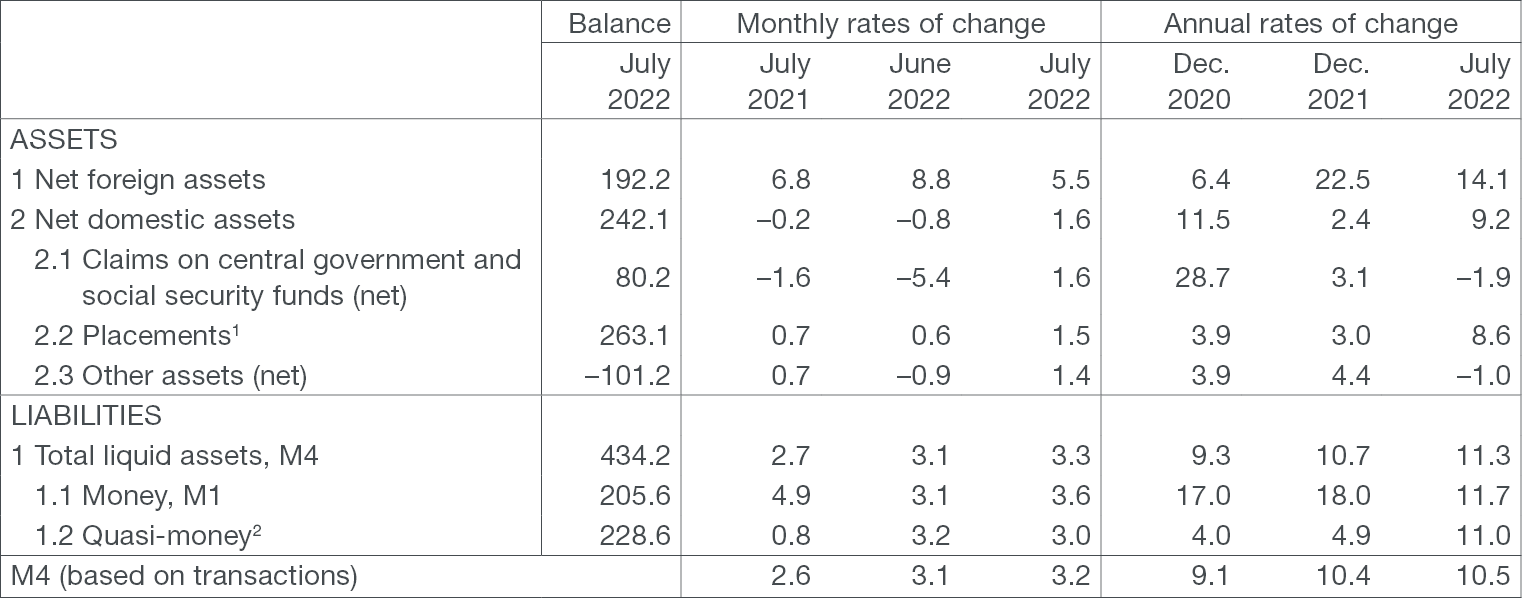
1 The sum total of asset items 2.2 to 2.8 of Bulletin Table B1: Consolidated balance sheet of monetary financial institutions.
2 The sum total of liability items 2 to 5 of Bulletin Table B1: Consolidated balance sheet of monetary financial institutions.
Source: CNB.
Table 2 Loans (except the central government) and main components
in billion HRK and %
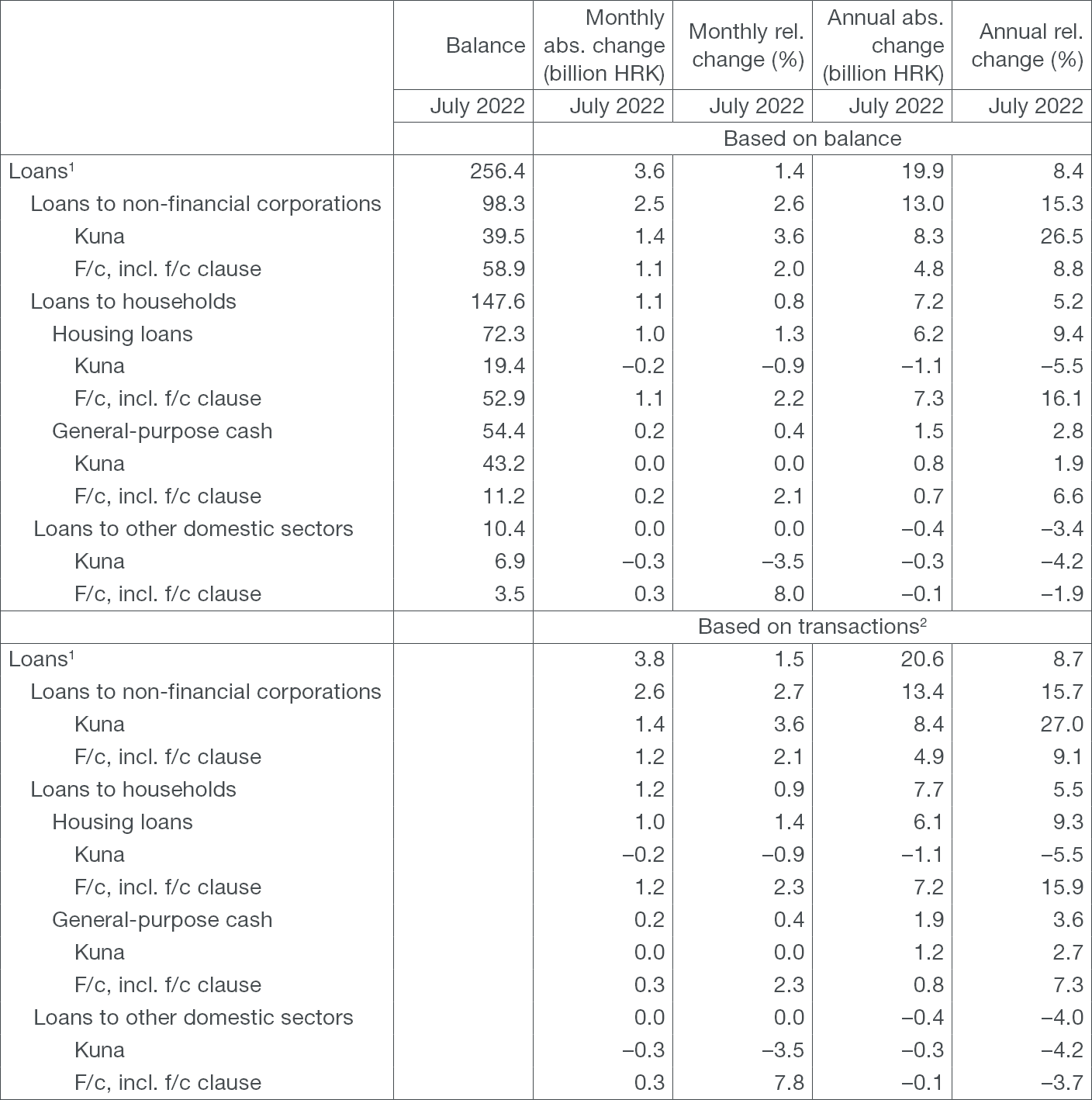
1 In addition to loans to non-financial corporations and households, they also include loans to the local government and other financial institutions.
2 The transactions show changes that exclude the effects of exchange rate changes, securities price adjustments, reclassification and write-off of loans, including the sale of loans in the amount of their value adjustment.
Source: CNB.
Table 3 Deposits (except the central government) and main components
in billion HRK and %
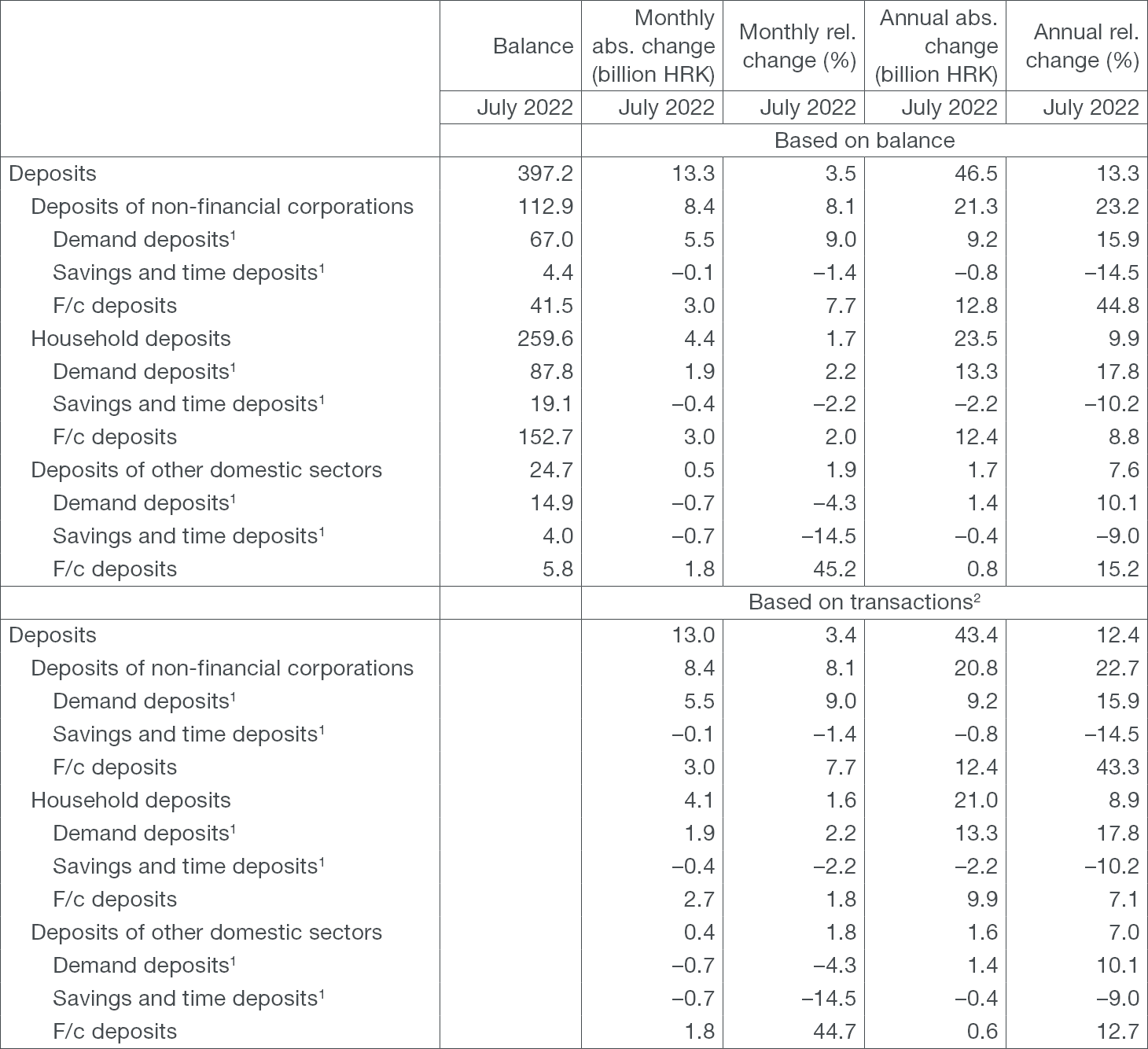
1 Includes only kuna sources of funds of credit institutions.
2 The transactions show changes that exclude the effects of exchange rate changes, securities price adjustments, reclassification and write-off of loans, including the sale of loans in the amount of their value adjustment.
Source: CNB.
For detailed information on monetary statistics as at July 2022, see:
Central bank (CNB)
Other monetary financial institutions
